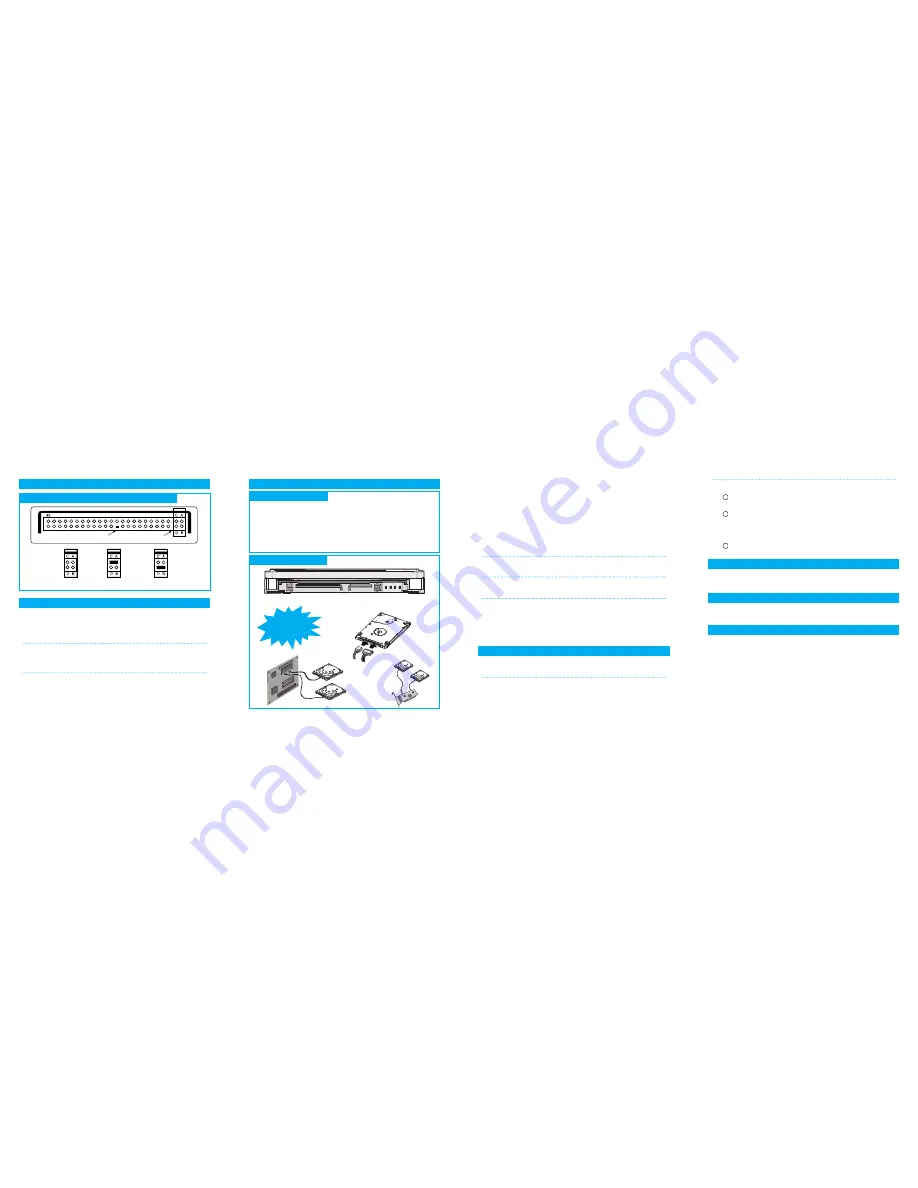
(a) Turn off the power of your computer.
(b) Unplug the external power cables to the computer.
(c) Open the cover of your Computer.
Cover opening mechanism and the location of the hard disk drive
may vary from one computer to another. (Consult your computer
manual)
(d) Insert the HDD into an available 3.5" bay in your computer and
secure it to computer and secure it to the chassis using the
provided screws.
(e) Connect Cables.
Attach the SATA interface cable to the interface connector on the hard
disk drive. The connector is keyed and will fit in only one way.
Attach the power cable to the power receptor on the hard disk drive.
The connector is keyed and will fit in only one way.
Check all other cable connections before turning on your computer.
CAUTION! : Do not force or rock the connectors into their
sockets on the hard disk drive. Push them in
straight until they are seated.
Run the CMOS (BIOS) set-up program to detect the new hard disk
drive.
Go into CMOS screen during the booting of the computer.
For descriptive details of the program, refer to the computer's user's
manual
1. Making Computer Detect the New Device
1
2
3
1
PATA Installation
Configuring your Hard Disk Drive (Master, Slave)
Polarity
Jumpers
Master
Slave
Cable Select
SATA Interface
Connector
Power Connector
Jumper Pins
(For Factory Use Only)
Installing the hard disk
SATA
Interface
Cable
Power Cable
Computer
Main Board
Serial SATA
Host Adapter
SATA Installation
Installing the hard disk
Do Not Connect
In Reverse !!
Note:
- Turn off the system power !
- Cover opening mechanism and the location of the hard
disk drive may vary from one computer to another.
Turn off the computer, unplug the external cables, and open computer
cover. Mount the hard disk drive in the designated place in the
computer with screws provided with the product.
Connect 40 pin interface cable and power cable. Make sure that the
direction of the cables are correct and matches the shape of the
receptacles when connecting cables. Incorrect cable connection may
damage the hard disk drive.
1
2
Installation Your Hard Drive
Note:
SATA 1.5Gb/s Speed Limit Jumper setting Only for
SATA 3.0Gb/s products. In some rare cases SATA 1.5Gb/s
hosts can not establish SATA interface connection with
SATA 3.0Gb/s devices due to interface protocol issues.
In this case the jumper may be installed as shown on the
figure below to force the device to negotiate for SATA
1.5Gb/s speed.
Make the computer detect the hard disk.
If your computer supports IDE HDD Auto Detection, the hard disk
drive will automatically be detected.
If your computer does not support auto detect, go into the User
Define Mode and by referring written information on the product,
set the correct settings for Cylinder, Head, and Sector and if some
Bios must be, set the HDD Mode to LBA.
Save the changed details and exit.
Refer to your Operating System manual or system manual for partitioning
and formatting.
Additional information can be obtained at www.samsunghdd.com.
When using within an USB external case, sometimes drive is not
recognized.
It may be caused by insufficiency of USB DC power.
By supplying a subsidy DC power, the symptom can be solved.
When using within an USB external case, drive can not be Format.
First, confirm whether a partition has been created correctly.
Format does not work if there is no partition.
2. Partitioning and Formatting the Drive
3. Samsung World Wide Web Site
FAQs
2
Q1
Q2
1
2
3


